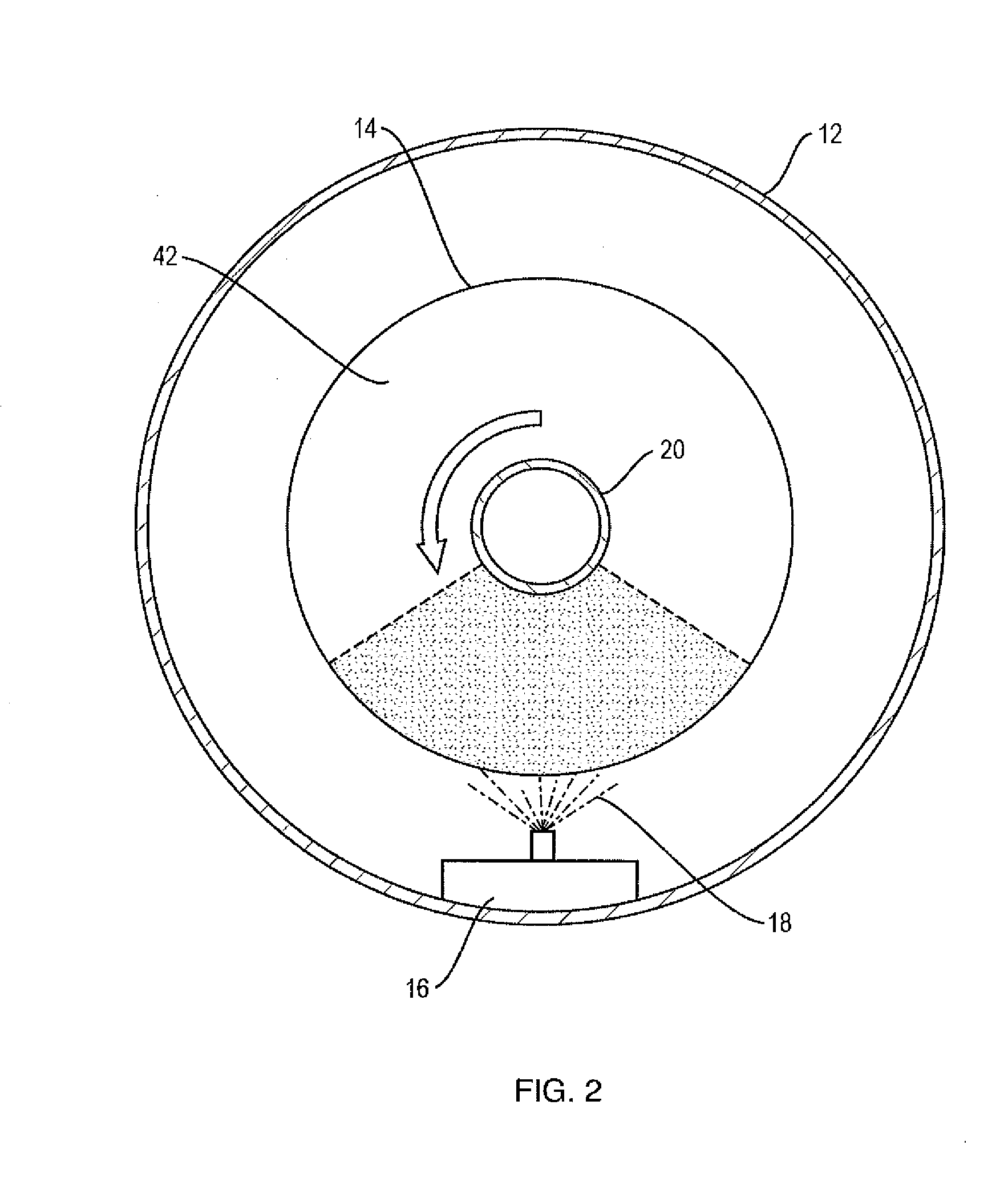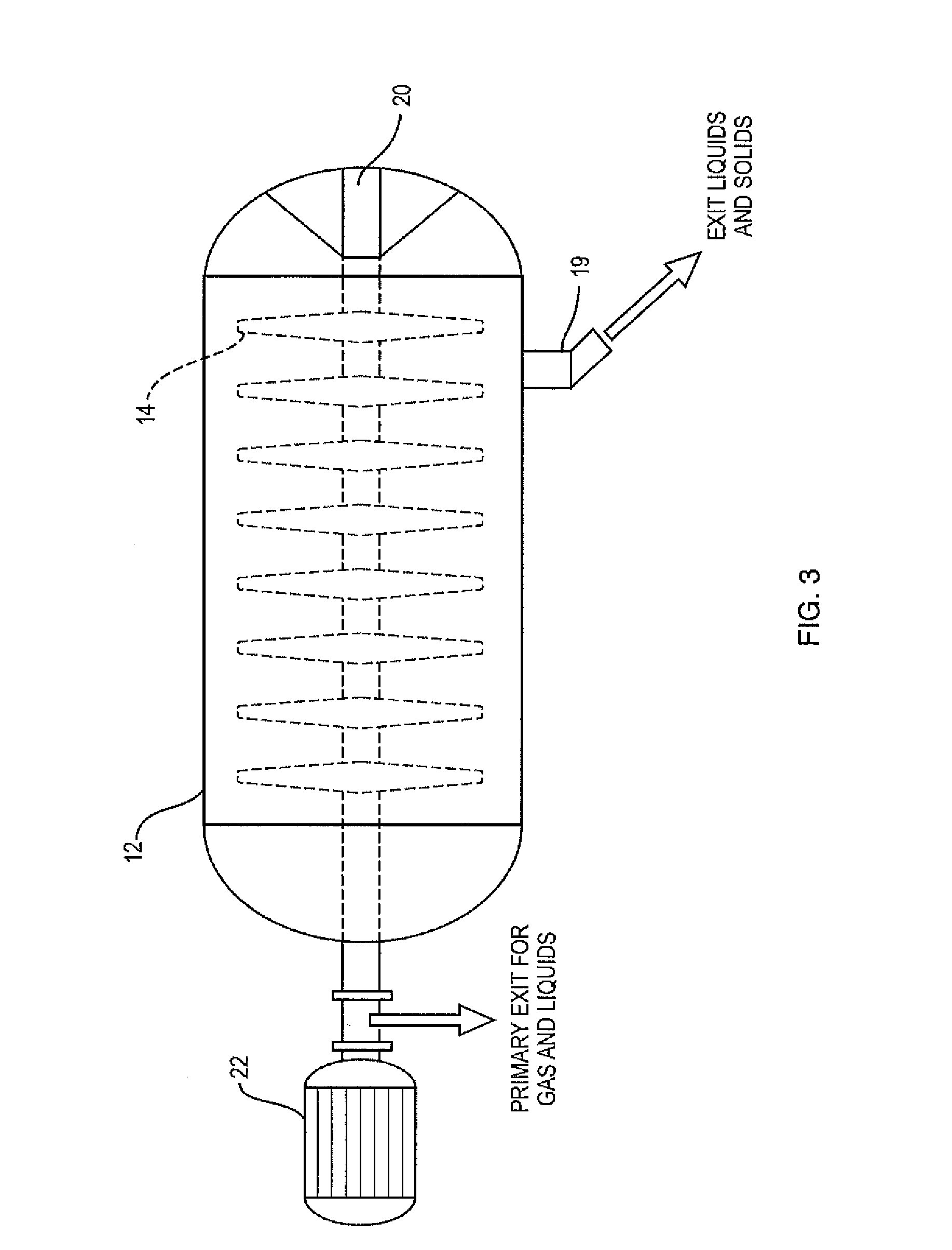System and method for producing biomaterials
a biomaterials and system technology, applied in the field of systems and methods for cultivating and extracting biomaterials from feedstocks, can solve the problems of difficult cultivation of fungi or other organisms in such bioreactors, complex manipulation, and complicated engineering of optimal bioreactor design
- Summary
- Abstract
- Description
- Claims
- Application Information
AI Technical Summary
Benefits of technology
Problems solved by technology
Method used
Image
Examples
Embodiment Construction
[0029]A system 10 of the present invention suitable for manufacturing and extracting desired biomaterials from one or more microorganisms including, but not limited to, fungi, is shown in FIG. 1. The system 10 includes a horizontal reactor vessel 12 containing vertical trays or discs 14 and a horizontal manifold 16 containing spray nozzles 18 in either the upper or upper and lower regions of the reactor vessel 12. The reactor vessel 12 also includes a well 19 located in the reactor vessel 12. The well 19, which is also shown in FIG. 3, is equipped with means to control the fluid level in the well 19 and / or the reactor vessel 12. Suitable means to control the fluid level are instruments and flow control devices designed to sense and / or maintain the liquid level in the well 19 while preventing the liquid volume from becoming too high or too low within the well 19 or vessel 12 at any given step in the process.
[0030]Suitable instruments and flow control devices for use in the well 19 as...
PUM
| Property | Measurement | Unit |
|---|---|---|
| semi-permeable | aaaaa | aaaaa |
| pressure | aaaaa | aaaaa |
| temperature | aaaaa | aaaaa |
Abstract
Description
Claims
Application Information
 Login to View More
Login to View More - R&D
- Intellectual Property
- Life Sciences
- Materials
- Tech Scout
- Unparalleled Data Quality
- Higher Quality Content
- 60% Fewer Hallucinations
Browse by: Latest US Patents, China's latest patents, Technical Efficacy Thesaurus, Application Domain, Technology Topic, Popular Technical Reports.
© 2025 PatSnap. All rights reserved.Legal|Privacy policy|Modern Slavery Act Transparency Statement|Sitemap|About US| Contact US: help@patsnap.com



